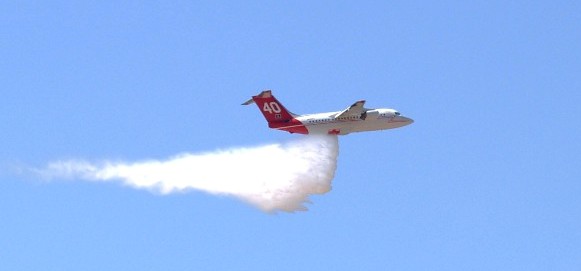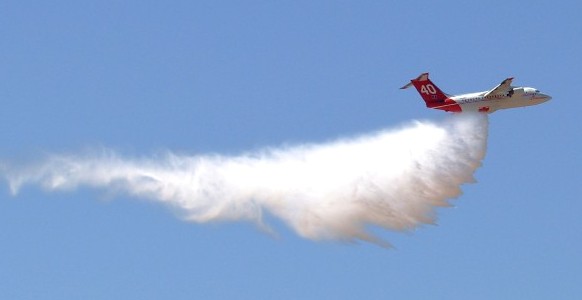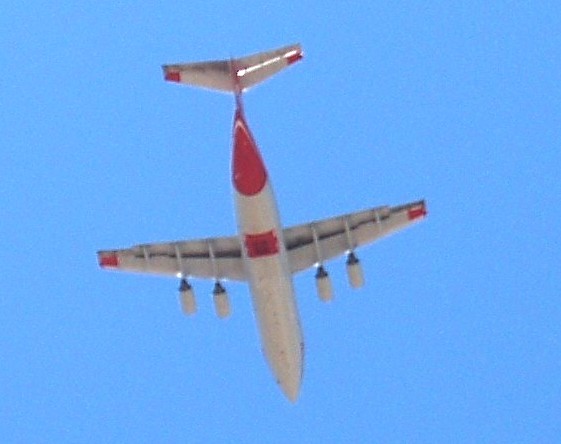We received some additional photos from Bill Moss taken at last week’s Missoula test of Neptune’s BAe-146 Tanker 40, the airliner-to-air-tanker conversion.
We have heard that instead of having large bomb bay-type doors for releasing retardant, like most air tankers, this one has four holes aft of the landing gear through which the retardant or water passes. This implies that the retardant is pumped, rather than dropped by gravity, from the tanks, and is probably pushed out by compressed air like on the military MAFFS ships and Evergreen’s new 747 air tanker.
The Missoulian has an excellent article that speculates about the future of the air tanker fleet and provides some details about Neptune’s test of the new Tanker 40. It is a lengthy article, but here is an excerpt:
Firefighters want to dial up specific retardant loads for their needs. The request is measured in coverage levels of gallons per 100 square feet. Fire burning in light fuels like grass and brush might get a coverage level 3 drop, which is three gallons of retardant in every 10-by-10-foot square. Heavy timber might need coverage level 6 or 8.
To test that, Neptune workers set up a grid of 2,323 fence posts with plastic cups attached to the tops in an open sector of Missoula International Airport. Pilots Peter Bell and Wayne Dahlen spent hours last week flying over the field, dumping loads of red slurry into the cups. A local youth soccer team volunteered to run out after each pass to measure and clean the cups.
The test attracted the attention of Forest Service national aviation officer Pat Norbury. The former lead-plane pilot now coordinates firefighting air action all over the Pacific Northwest.
“This is a fairly unusual level of activity,” Norbury said of the BAe-146’s test regime. “It’s rare we inspect new planes.”
The Forest Service *hasn’t approved an addition to its heavy air tanker roster since the late 1980s. The agency doesn’t own any firefighting aircraft, preferring to contract with private companies that provide the planes and crews. Neptune’s current contract extends through 2013.
That idea is up for debate on the national level. Congress is considering a multibillion-dollar plan to buy the Forest Service a fleet of C-130-J planes specially built for firefighting.
There are a couple of ways that could work, according to former California state air operations director Mike Padilla. If the Forest Service owns the planes, it could contract them out to private operators like Neptune, or work with the military to fly them.
“What the Forest Service is thinking about is to build a national fleet of aircraft designed to fight fire, not old surplus aircraft that’s rebuilt,” Padilla said. “But they’re not sure where or when they can get the money. I think Neptune and Aero Union will be presenting their own proposals of the current fleet sometime this year.”
*The statement “The Forest Service hasn’t approved an addition to its heavy air tanker roster since the late 1980s” may be technically accurate, if the term “heavy” equates to “large”. But just in the last two years the Interagency Air Tanker Board certified three “very large” air tankers that we can think of, including the Martin Mars, the DC-10, and the 747. The BAe-146, holding about 3,000 gallons, is considered a “large”, but not a “very large”, air tanker.
The Missoulian has some photos of the aircraft and the crew as well as a short video about the tests.
Thanks Dick
UPDATE February 9, 2011:
A photo of the test won second place in a photo contest held by Aviation Week.



